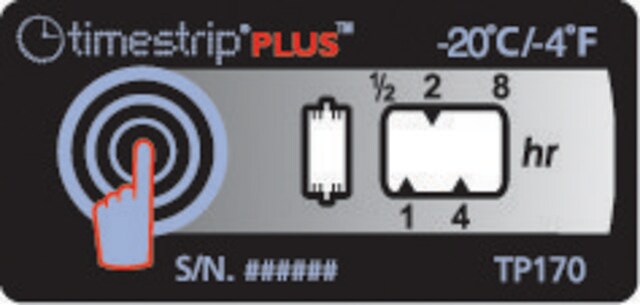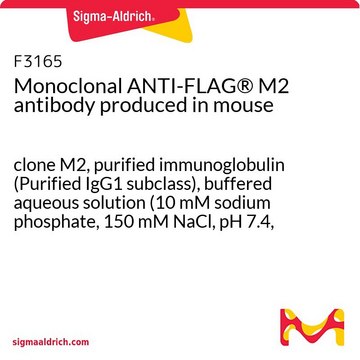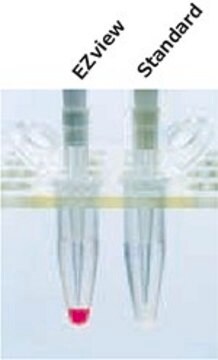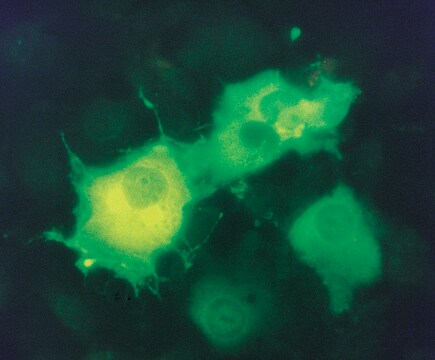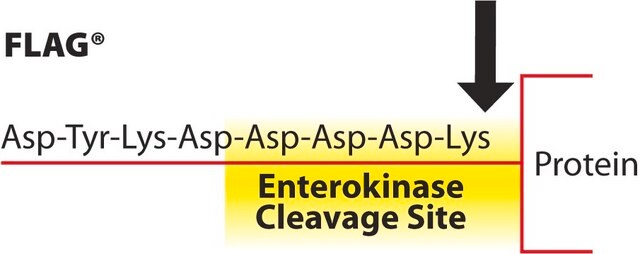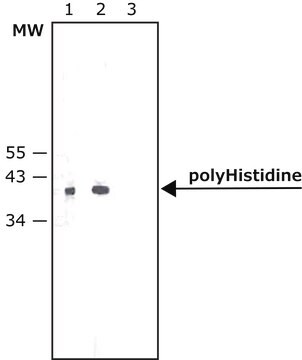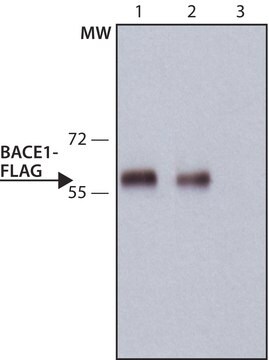P2983
Anticorpo monoclonale ANTI-FLAG® M2
96-well, clear, polystyrene, flat bottom plate
Sinonimo/i:
Anti-ddddk, Anti-dykddddk
About This Item
Prodotti consigliati
Tipo di anticorpo
primary antibodies
Livello qualitativo
Materiali
polystyrene
Clone
monoclonal
Durata
Unopened plates are stable for 2 years. Once opened they are stable for 2 weeks.
tecniche
ELISA: suitable
Isotipo
IgG1
Capacità
100-300 ng/well
Temperatura di conservazione
2-8°C
Cerchi prodotti simili? Visita Guida al confronto tra prodotti
Descrizione generale
Applicazioni
Learn more product details in our FLAG® application portal.
Stoccaggio e stabilità
Altre note
The plate is supplied as a 96-well microtiter plate with clear sides and bottom.
Coating:
ANTI-FLAG® M2 mouse monoclonal antibody, IgG1, is coated at a reaction volume of 200 ml/well.
Blocking:
The wells are pre-blocked for convenience at 275 to 300 ml/well with a complex solution containing bovine serum albumin.
Specificity:
The plates are specific for the FLAG epitope regardless of its placement in the fusion protein: amino-terminal, Met-amino terminal, carboxy terminal or internal. Binding of the epitope is not Ca2+ dependent.
Sensitivity:
Detection of 1 ng/well of a control fusion protein was observed in an ELISA format with p-Nitrophenyl Phosphate (pNPP) as a substrate.
Capacity:
Capture of 100 to 300 ng/well of a FLAG fusion protein has been demonstrated.
Note legali
Non trovi il prodotto giusto?
Prova il nostro Motore di ricerca dei prodotti.
Prodotti correlati
Scegli una delle versioni più recenti:
Possiedi già questo prodotto?
I documenti relativi ai prodotti acquistati recentemente sono disponibili nell’Archivio dei documenti.
I clienti hanno visto anche
Contenuto correlato
Protein purification techniques, reagents, and protocols for purifying recombinant proteins using methods including, ion-exchange, size-exclusion, and protein affinity chromatography.
Protein expression technologies for expressing recombinant proteins in E. coli, insect, yeast, and mammalian expression systems for fundamental research and the support of therapeutics and vaccine production.
Il team dei nostri ricercatori vanta grande esperienza in tutte le aree della ricerca quali Life Science, scienza dei materiali, sintesi chimica, cromatografia, discipline analitiche, ecc..
Contatta l'Assistenza Tecnica.